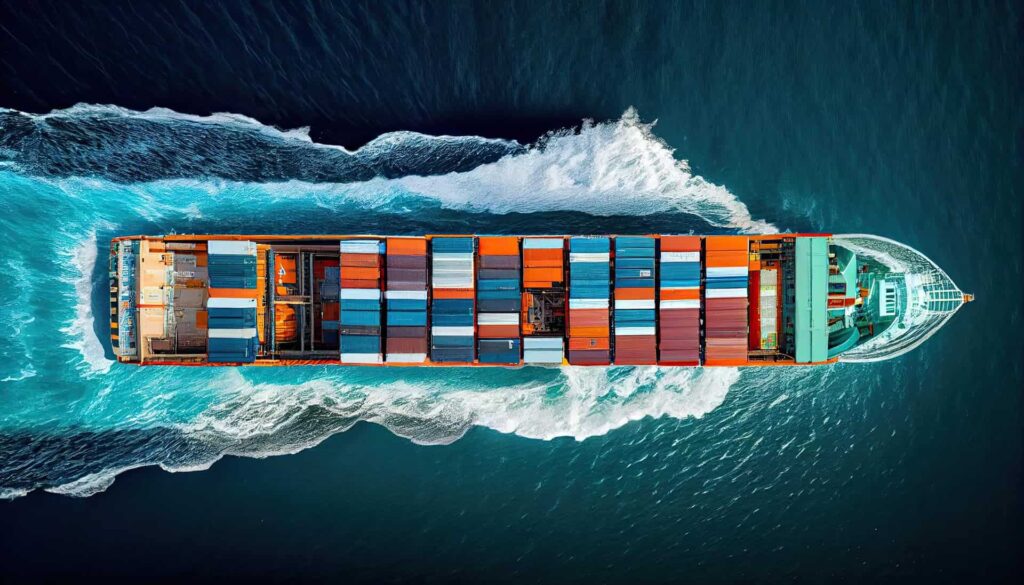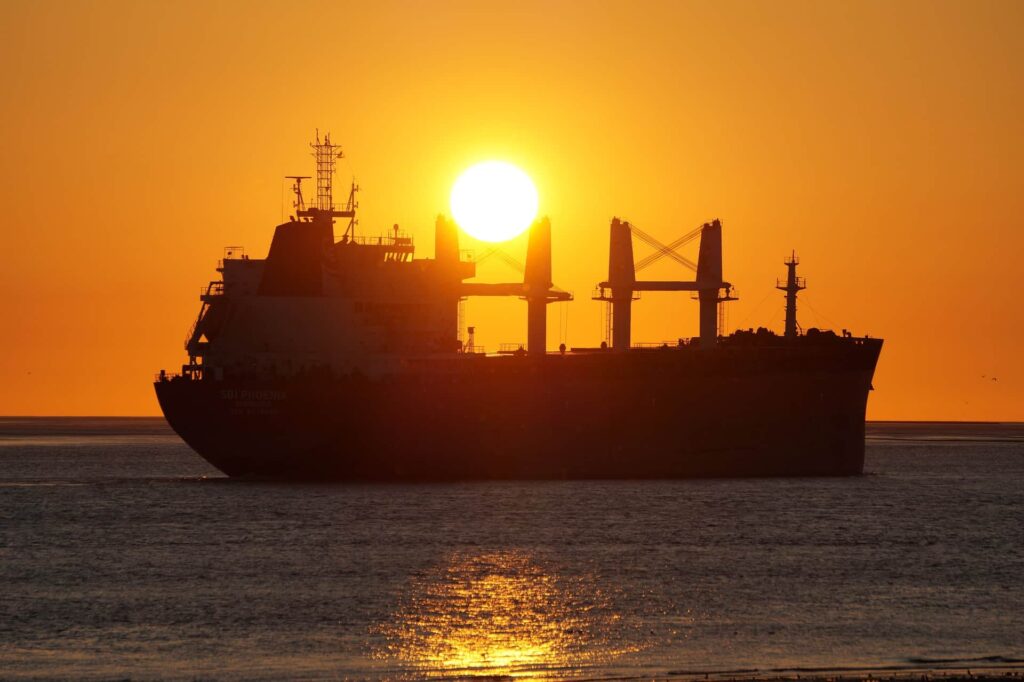
Sea Freight
Safely Carrying Your Journey: Your Reliable Solution Partner in Sea Freight Transportation!
We are here to safely transport your valuable cargoes across the seas! Guven Co Ltd. is a specialized and customer-centric solution partner in sea freight transportation. To inform you why you should choose us, here are some of the advantages we offer:
Sea transportation provides a significant solution for businesses operating in various sectors worldwide. Sea transport involves loading goods onto a sea vessel and ensuring the safe transportation of these goods to their destination. This mode of transportation, where speed is not a crucial factor, is particularly preferred for transporting low-value goods. However, due to its susceptibility to technological advancements, it has become a rapidly evolving and changing industry, regardless of the value of the cargo being transported.
What sets sea transportation apart from other modes is its ability to carry a substantial amount of cargo at once, its reliability, extensive capacity, and lower risk of cargo damage and accidents. Sea transportation is 3.5 times cheaper than rail transportation and seven times cheaper than road transportation. On the other hand, air transportation remains the most expensive mode. Therefore, sea transport is often preferred over other modes due to its cost-effectiveness.
Sea transportation, enabling access to every corner of the world, can be broadly categorized into two types based on the types of voyages: tramp and liner. In tramp transportation, where the presence of cargo is crucial, specifying a particular route is challenging. Shipowners in tramp transportation prefer directing their ships to areas with a higher likelihood of obtaining cargo. In liner transportation, the focus is on services rather than the product. Timing is emphasized in this type of service, where the departure and arrival dates of the ship are known in advance. This allows shippers to obtain information about their transportation needs in advance.
When considering cargo and vessel types, sea transportation can be evaluated under five categories: tanker transportation, Ro-Ro (Roll-on/Roll-off) transportation, container transportation, combined transportation, and bulk cargo transportation.
Experience and Expertise
Guven Co Ltd. stands out with extensive experience and a dedicated team of experts in sea freight transportation. The knowledge accumulated over the years and our position as industry leaders reinforce our commitment to providing the best service to our customers.
Advanced Fleet and Security Standards
Our company possesses a fleet of modern and diverse vessels. Designed in adherence to advanced security standards, these vessels are equipped to transport our customers’ cargoes safely and securely. Our experienced crew works diligently at every stage to ensure safety.
Flexible and Personalized Services
To meet the diverse needs of our customers, we offer flexible service models. Our services span from container transportation to project-based loadings, providing a wide range of solutions. We manage cargo transportation processes effectively by developing personalized solutions for each customer.
Technological Innovation and Tracking System
Guven Co Ltd. utilizes the latest technology in sea transportation, ensuring fast and efficient services for our customers. With smart tracking systems and online reservation platforms, our customers can monitor the real-time status of their cargoes and easily manage their processes.
Environmental Sensitivity
We prioritize environmental sustainability. Our energy-efficient vessels and eco-friendly practices focus on preserving the marine ecosystem while minimizing our carbon footprint.
Your journey is safe with us! Guven Co Ltd. takes pride in offering seamless, secure, and environmentally friendly sea freight transportation services to our customers. Set sail with us and experience the privilege of safely transporting your cargoes across the oceans!
FAQ
The types of ships used in maritime freight transportation vary depending on the type and volume of cargo being transported. Generally, the following types of ships are used:
- Dry bulk carriers: These ships carry dry cargo such as bulk cargo, containers, bulk cargo containers, palletized cargo, roll cargo, and special cargo.
- Tankers: These ships carry liquid cargo such as oil, gas, and chemicals.
- Ro-Ro ships: These ships are also known as roll-on/roll-off ships. They carry wheeled vehicles such as trucks, buses, and trailers.
- Reefer ships: These ships carry frozen or chilled food.
- Container ships: These ships carry containers.
The voyages of ships used in maritime freight transportation are planned based on the type, volume, weight, and destination of the cargo being transported. When planning ship voyages, the goal is to achieve economical and efficient transportation.
The following factors are taken into account in the voyage planning stage:
- Type of cargo
- Volume of cargo
- Weight of cargo
- Destination
- Ship capacity
- Ship fuel consumption
- Ship route
- Maritime conditions
The safety of ships used in maritime freight transportation is ensured by the design, construction, equipment, and operation of the ships. Ships are built and equipped in accordance with international standards. Ships take precautions against risks such as fire, explosion, and maritime accidents. Ship personnel are trained in maritime rules and safety measures.
Some methods used to ensure ship safety include:
- The durability of the materials used in the design and construction of the ship
- The adequacy of the firefighting, safety, and rescue equipment used in the ship’s equipment
- The training of ship personnel in maritime rules and safety measures
- Regular maintenance and repair of the ship
Sea transportation businesses determine pricing based on factors such as the type of cargo, transportation distance, transportation date, and other relevant factors. Pricing policies may vary among different businesses.
Cargoes are carefully prepared to avoid damage during transportation. This involves packaging, labeling, and ensuring secure loading of the cargoes.
